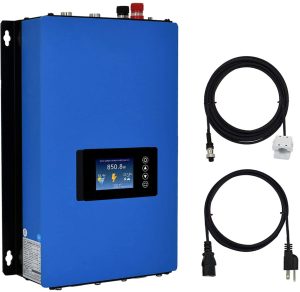When it comes to converting DC (Direct Current) from a battery into AC (Alternating Current), the type of inverter you choose can significantly impact the performance, efficiency, and longevity of your electronic devices. A pure sine wave inverter stands out as a superior choice for several reasons, which we will explore in detail.
Understanding Inverter Types
Before diving into the specifics of pure sine wave inverters, it's essential to understand the alternatives. Inverters generally come in two types: modified sine wave and pure sine wave. The primary difference lies in the quality and consistency of the power output.
Modified Sine Wave Inverters
- Power Quality: Generates a simpler and approximated AC signal.
- Cost: Less expensive, with prices typically ranging from $30 to $500, depending on power capacity and features.
- Efficiency: Slightly less efficient, with around 75-80% efficiency in converting DC to AC.
- Compatibility: May cause issues with sensitive electronics or appliances that require a precise AC waveform.
Pure Sine Wave Inverters
- Power Quality: Produces a smooth and consistent AC waveform, identical to household electricity.
- Cost: More expensive, with prices ranging from $100 to over $1,000 for high-capacity models.
- Efficiency: Higher efficiency, usually above 90%, meaning less power is lost during the conversion process.
- Compatibility: Compatible with all AC electronic devices, ensuring a safer and more reliable operation.
Why Choose a Pure Sine Wave Inverter?
Performance and Compatibility
A pure sine wave inverter ensures that your electronic devices run smoothly and efficiently. It's particularly crucial for appliances with motors, such as refrigerators and microwaves, as it allows them to work quieter, cooler, and with less risk of malfunctions. The high compatibility also extends to sensitive electronics like laptops, gaming consoles, and medical equipment, which may not function correctly or could be damaged by the less consistent output of a modified sine wave inverter.
Efficiency and Longevity
With an efficiency rate of over 90%, a pure sine wave inverter ensures maximum conversion of power with minimal waste. This efficiency not only reduces the heat generated during operation but also conserves battery life, leading to longer periods between charges. Additionally, the high-quality AC output reduces the strain on electronic components, potentially extending the lifespan of connected devices.

Cost and Value
While the initial cost of a pure sine wave inverter is higher, the benefits in terms of compatibility, efficiency, and the protection of connected devices can offer significant value over time. The exact cost varies based on power capacity, ranging from 300 watts to over 5000 watts, and features such as remote control capabilities, USB ports, and built-in safety protections. For a typical home setup requiring a 1000-watt inverter, prices may range between $150 and $300, a worthwhile investment for the protection and efficiency it provides.
Conclusion
A pure sine wave inverter represents a superior choice for powering electronic devices from a DC source. Its consistent power output, high efficiency, and broad compatibility make it an ideal option for a wide range of applications, from home energy systems to recreational vehicles. Despite the higher upfront cost, the long-term benefits in device performance, safety, and energy savings make it a valuable investment for anyone looking to ensure reliable and efficient power conversion.